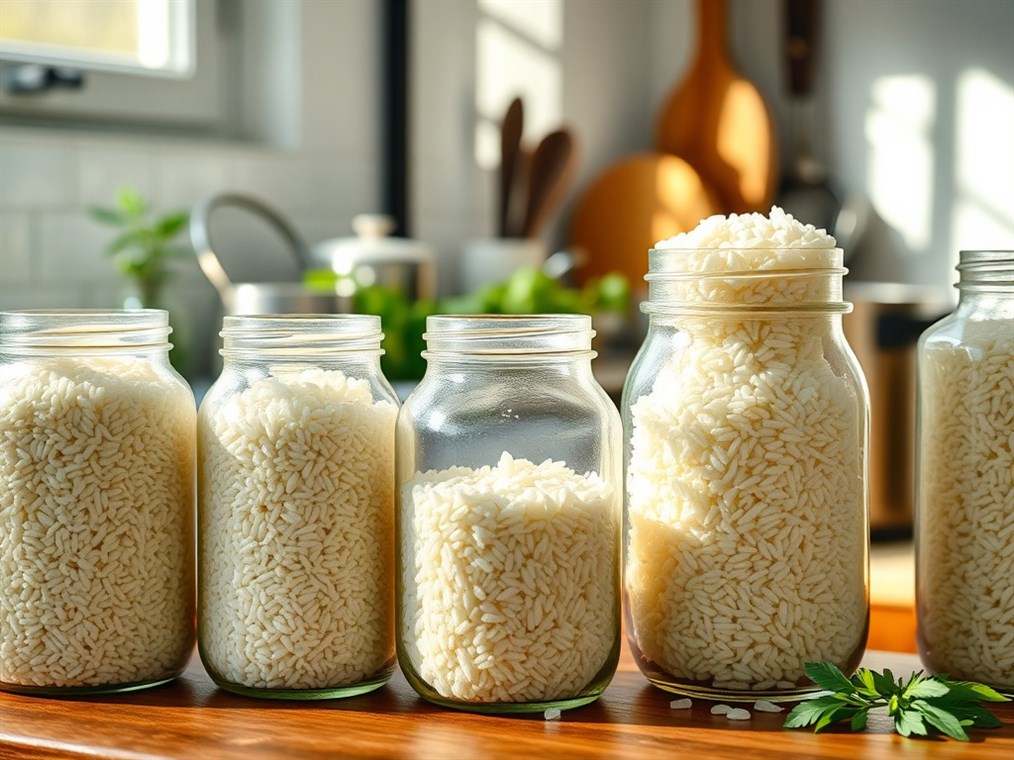Is White Rice Parboiled? Let’s Get to the Bottom of This.
Okay, so you’re staring at a bag of rice, and you’re wondering if it’s parboiled. It’s a fair question! With all the different types of rice out there, it’s easy to get lost in the details. The quick answer? Not all white rice is parboiled, but get this: parboiled rice can be made into white rice. Confused? Don’t worry, we’ll unpack it all.
Parboiling: What’s the Deal?
Think of parboiling as a spa treatment for rice before it heads to the mill. It’s a three-step process, kind of like a rice makeover:
- Soaking: First, the raw, unhusked rice – we’re talking paddy rice here – gets a good soak in water. Back in the day, this meant a long, cold bath for over a day. These days, they often use hot water to speed things up, cutting the soaking time down to just a few hours.
- Steaming: Next up, a steam bath! The soaked rice gets steamed, which does a cool thing: it gelatinizes the starch inside. Think of it like pre-cooking the rice a bit. Plus, it helps zap any unwanted bacteria.
- Drying: Finally, the rice gets dried off to reduce the moisture. This makes it ready for the milling process.
This isn’t some newfangled invention, by the way. People have been doing this for ages, and for good reason! You might also see parboiled rice called converted rice, easy-cook rice, or even sella rice.
Why Bother Parboiling? The Perks!
So, why put rice through all this? Well, parboiling actually makes rice better in several ways:
- Nutrient Boost: This is the big one. Parboiling is like a nutrient treasure hunt. It pushes vitamins and minerals from the outer layer (the bran) into the starchy inside (the endosperm). So, even after milling, you get more goodness, especially thiamine and niacin, than you would with regular white rice.
- Texture Perfection: Ever struggle with sticky rice? Parboiling to the rescue! It makes the rice firmer and less likely to clump. The grains stay separate and fluffy, which is perfect for dishes where you want distinct grains, like pilafs or rice salads.
- Less Breakage, More Rice: Parboiling strengthens the grains, so fewer break during milling. That means you get more whole grains in the end.
- Blood Sugar Friendly: Parboiled rice tends to have a lower glycemic index (GI) than regular white rice. This means it releases energy slower, which helps keep your blood sugar on an even keel.
- Happy Gut: Because of the way parboiling steams the rice while it’s still in its husk, parboiled rice manages to hold onto more fiber than your average white rice. And more fiber is always a win for your digestive system.
- Stays Fresh Longer: Parboiling can actually help rice last longer on the shelf.
Parboiled vs. White: The Showdown
The main difference boils down to processing (pun intended!). Regular white rice is just milled to remove the outer layers. Parboiled rice gets the whole soak, steam, and dry routine before milling. That’s what gives it its special powers.
Here’s a quick cheat sheet:
FeatureParboiled RiceWhite RiceHow It’s MadeGets a spa day (soaked, steamed, dried) before millingJust milled to remove the outer layersGood Stuff InsideMore vitamins, minerals, and fiberLess vitamins and minerals because the outer layers are removedHow It FeelsFirm and fluffySoft and sometimes stickyEnergy ReleaseSlower, steadierFasterLooksA bit goldenBright whiteTastesA little nuttyPretty neutral

